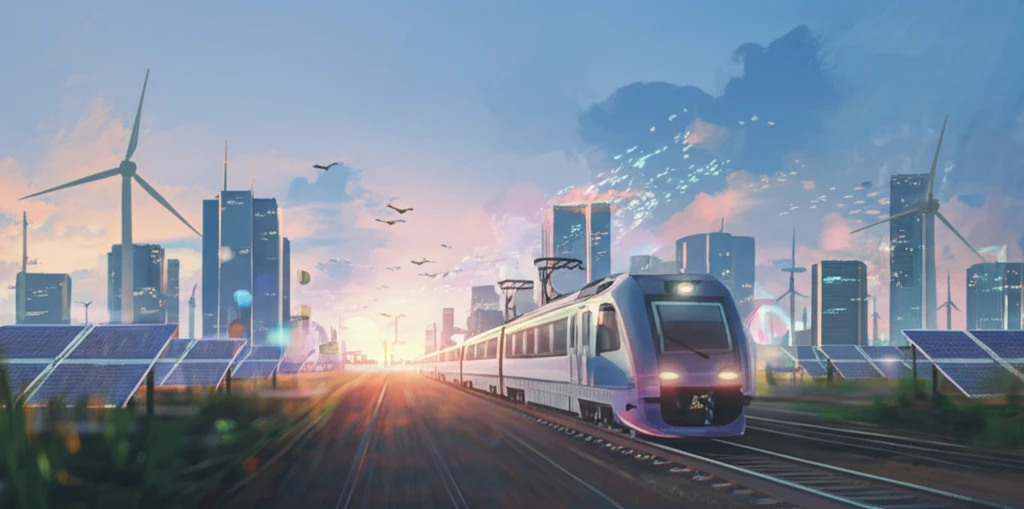
Smart Transit: How Regenerative Inverters are Revolutionizing Electric Railways
"Discover the innovative technology making electric railways more efficient and sustainable by capturing and reusing braking energy."
As the world increasingly focuses on combating climate change, enhancing energy efficiency has become crucial. Transportation systems, particularly electric railways, play a pivotal role in this shift. In Poland, for instance, where a significant portion of electricity comes from coal power plants, reducing energy consumption in transportation directly lowers carbon dioxide emissions.
The rise of regenerative braking in trains presents a significant opportunity. This system allows trains to convert kinetic energy back into electrical energy during braking. However, this energy can only be effectively utilized if other trains on the same electrical section are drawing power. Without this demand, the energy is lost as heat through traditional braking systems.
Enter the regenerative inverter: a key technology for capturing and reusing this otherwise lost energy. By implementing regenerative inverters in traction substations, excess energy from braking trains can be fed back into the grid, reducing overall energy consumption and enhancing the sustainability of electric railway systems.
What are Regenerative Inverters and How Do They Work?

Regenerative inverters aren't exactly new; early versions using thyristor converters appeared in the 1970s. Today's advanced inverters, powered by IGBT transistors, not only recover braking energy but also offer active filtering to improve power quality. These inverters are typically installed in traction substations and connect to the AC power grid, allowing them to feed excess energy back into the network.
- Enhanced Braking System Redundancy: Provides an additional layer of safety.
- Improved Energy Quality: Stabilizes the electrical supply.
- Reduced Tunnel Temperatures: Decreases the heat generated in underground systems.
Looking Ahead: The Future of Regenerative Inverters in Electric Railways
Regenerative inverters represent a promising avenue for enhancing the sustainability and efficiency of electric railway systems. As technology advances and prototype installations pave the way, these systems will likely see broader adoption. By carefully analyzing factors such as train types, track profiles, and energy consumption patterns, railway operators can optimize the placement and sizing of regenerative inverters, unlocking significant energy savings and contributing to a greener future for transportation.
